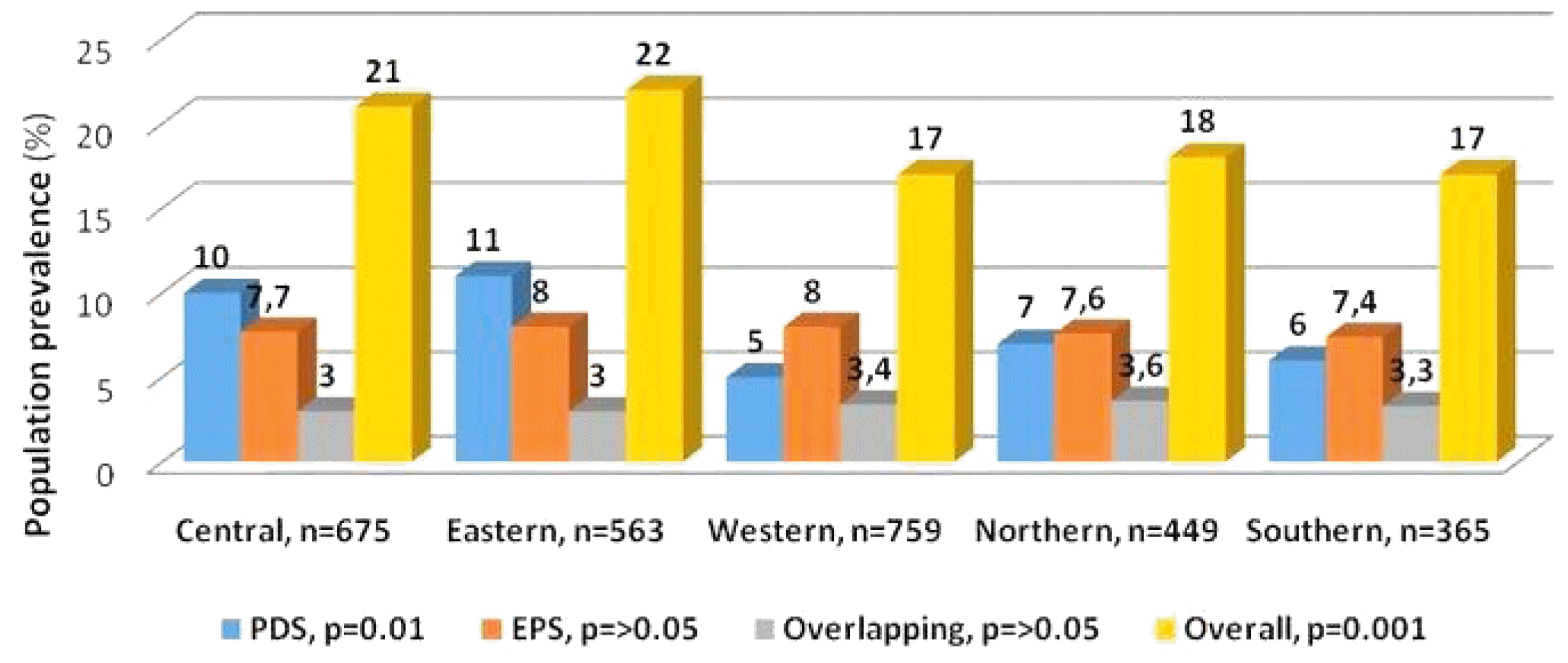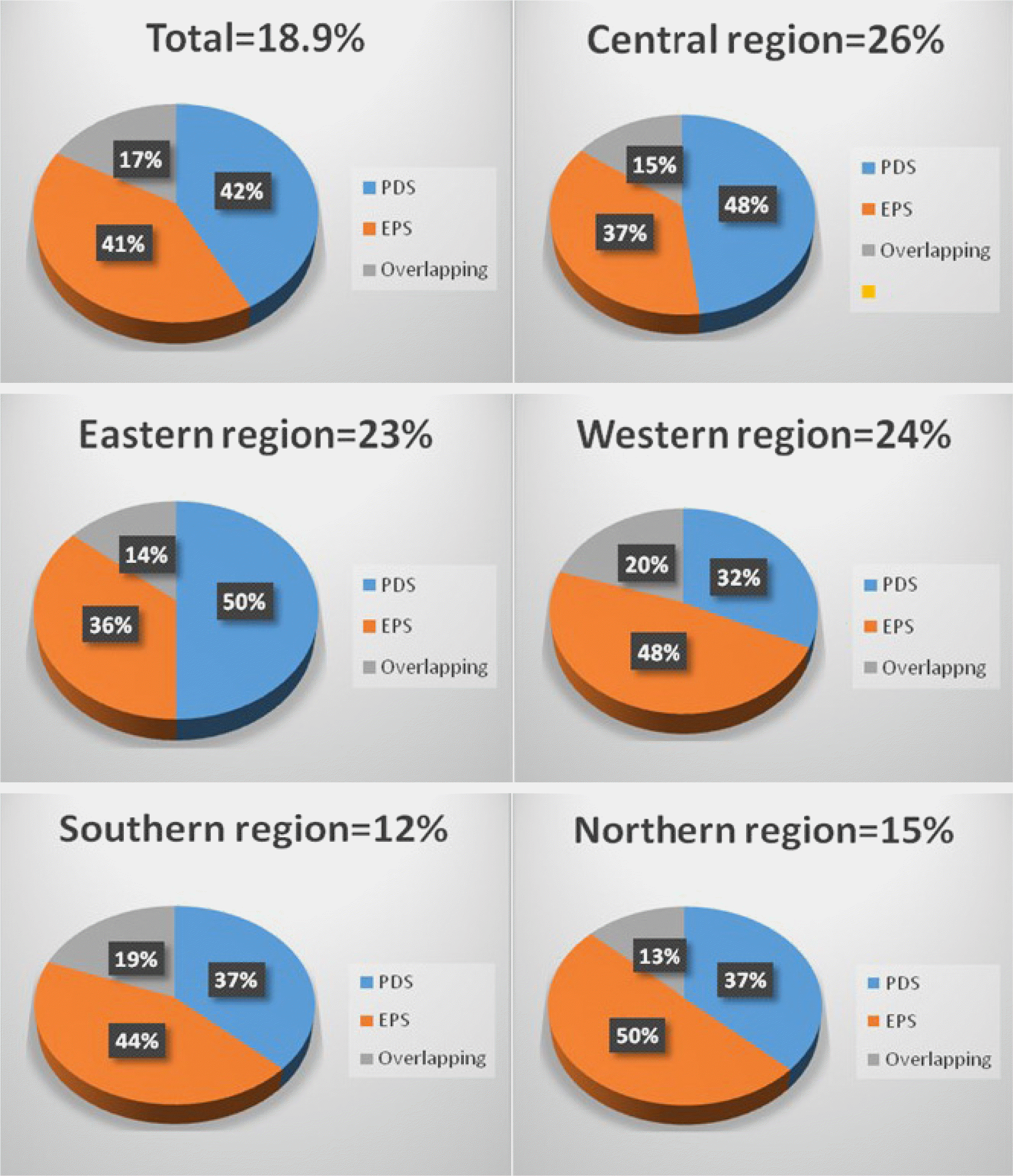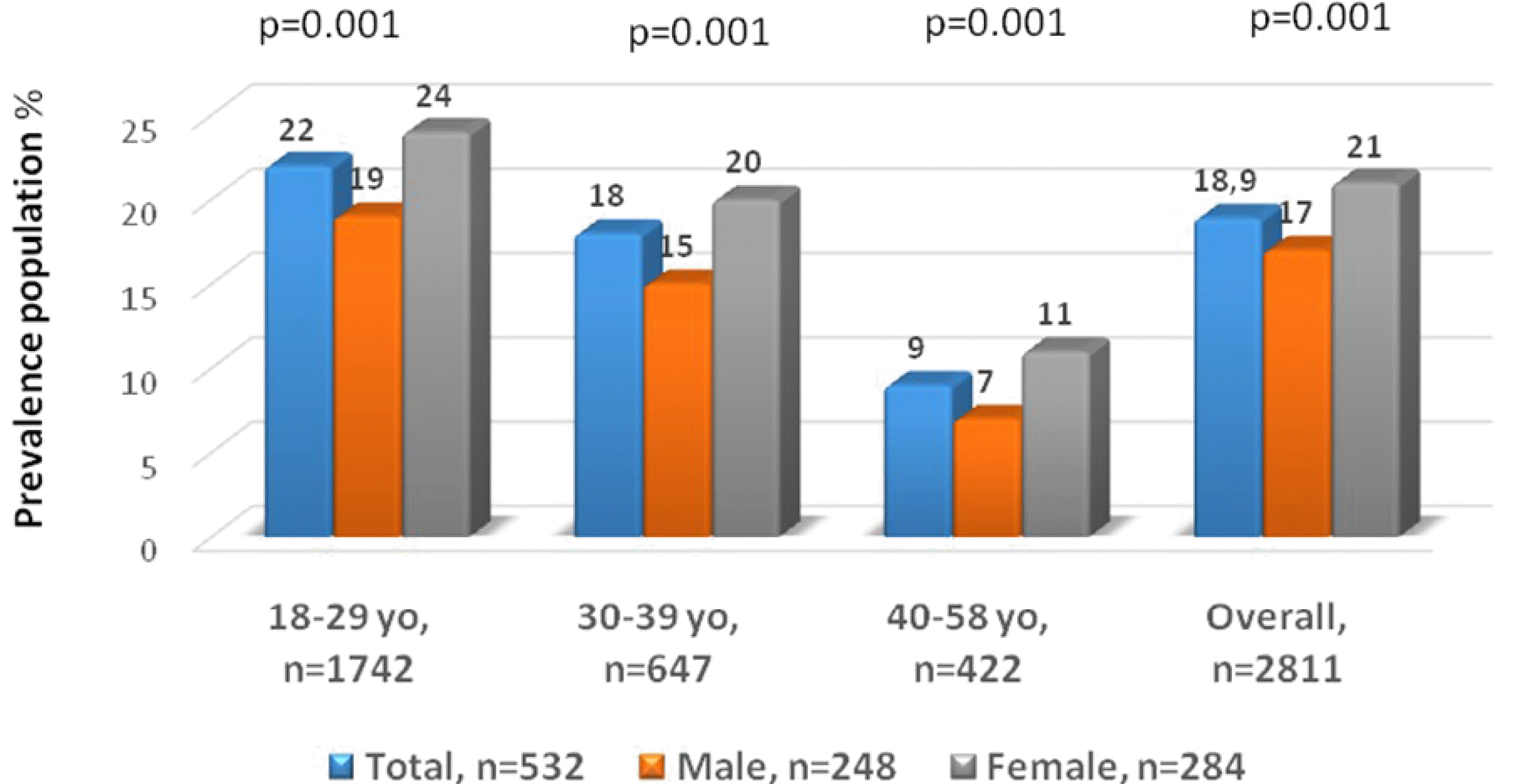1. Koduru P, Irani M, Quigley EMM. 2018; Definition, pathogenesis, and management of that cursed dyspepsia. Clin Gastroenterol Hepatol. 16:467–479. DOI:
10.1016/j.cgh.2017.09.002. PMID:
28899670.
3. Mearin F, Cucala M, Azpiroz F, Malagelada JR. 1991; The origin of symptoms on the brain-gut axis in functional dyspepsia. Gastroenterology. 101:999–1006. DOI:
10.1016/0016-5085(91)90726-2.

4. Talley NJ, Hunt RH. 1997; What role does Helicobacter pylori play in dyspepsia and nonulcer dyspepsia? Arguments for and against H. pylori being associated with dyspeptic symptoms. Gastroenterology. 113(Suppl 6):S67–S77. DOI:
10.1016/S0016-5085(97)80016-9.

5. Tack J, Piessevaux H, Coulie B, Caenepeel P, Janssens J. 1998; Role of impaired gastric accommodation to a meal in functional dyspepsia. Gastroenterology. 115:1346–1352. DOI:
10.1016/S0016-5085(98)70012-5.

6. Walker MM, Talley NJ, Prabhakar M, et al. 2009; Duodenal mastocytosis, eosinophilia and intraepithelial lymphocytosis as possible disease markers in the irritable bowel syndrome and functional dyspepsia. Aliment Pharmacol Ther. 29:765–773. DOI:
10.1111/j.1365-2036.2009.03937.x. PMID:
19183150. PMCID:
PMC4070654.

8. Vanheel H, Carbone F, Valvekens L, et al. 2017; Pathophysiological abnormalities in functional dyspepsia subgroups according to the Rome III criteria. Am J Gastroenterol. 112:132–140. DOI:
10.1038/ajg.2016.499. PMID:
27958284.

9. Hammer J. 2018; Identification of individuals with functional dyspepsia with a simple, minimally invasive test: a single center cohort study of the oral capsaicin test. Am J Gastroenterol. 113:584–592. DOI:
10.1038/ajg.2018.16. PMID:
29533398.

11. Drossman DA, Hasler WL. 2016; Rome IV-functional GI disorders: disorders of gut-brain interaction. Gastroenterology. 150:1257–1261. DOI:
10.1053/j.gastro.2016.03.035. PMID:
27147121.

12. Drossman DA. 2016; Functional gastrointestinal disorders: history, pathophysiology, clinical features, and Rome IV. Gastroenterology. 150:1262–1279. DOI:
10.1053/j.gastro.2016.02.032. PMID:
27144617.

13. Palsson OS, Whitehead WE, van Tilburg MAL, et al. 2016; Development and validation for Rome IV diagnostic questionnaire for adults. Gastroenterology. 150:1481–1491. DOI:
10.1053/j.gastro.2016.02.014. PMID:
27144634.
14. Ford AC, Marwaha A, Sood R, Moayyedi P. 2015; Global prevalence of, and risk factors for, uninvestigated dyspepsia: a meta-analysis. Gut. 64:1049–1057. DOI:
10.1136/gutjnl-2014-307843. PMID:
25147201.

15. Alanazi BG, Alanazi FH, Albriek AZ, et al. 2019; The prevalence of Helicobacter pylori infection in patients with dyspepsia in the central rural region of Saudi Arabia. IAJPS. 6:1358–1364.
16. Akeel M, Elmakki E, Shehata A, et al. 2018; Prevalence and factors associated with H. pylori infection in Saudi patients with dyspepsia. Electron Physician. 10:7279–7286. DOI:
10.19082/7279. PMID:
30258561. PMCID:
PMC6140988.

17. Masoodi I. 2018; The prevalence and risk factors of non-ulcer dyspepsia in the western region of Saudi Arabia: short form Leads dyspepsia questionnaire revisited. Int J Med Sci Public Health. 7:915–921. DOI:
10.5455/ijmsph.2018.0823617082018.

18. Ayoola AE, Ageely HM, Gadour MO, Pathak VP. 2004; Prevalence of Helicobacter pylori infection among patients with dyspepsia in South-Western Saudi Arabia. Saudi Med J. 25:1433–1438.
19. Morad NA, Ahmed ME, Al-Wabel A, et al. 1993; Helicobacter pylori associated dyspepsia in 208 patients from southern Saudi Arabia. Ann Saudi Med. 13:340–343. DOI:
10.5144/0256-4947.1993.340. PMID:
17590697.

20. Spiller RC, Humes DJ, Campbell E, et al. 2010; The patient health questionnaire 12 somatic symptom scale as a predictor of symptom severity and consulting behaviour in patients with irritable bowel syndrome and symptomatic diverticular disease. Aliment Pharmacol Ther. 32:811–820. DOI:
10.1111/j.1365-2036.2010.04402.x. PMID:
20629976.

21. Moayyedi P, Lacy BE, Andrews CN, Enns RA, Howden CW, Vakil N. 2017; ACG and CAG clinical guideline: management of dyspepsia. Am J Gastroenterol. 112:988–1013. DOI:
10.1038/ajg.2017.154. PMID:
28631728.

22. Enck P, Azpiroz F, Boeckxstaens G, et al. 2017; Functional dyspepsia. Nat Rev Dis Primers. 3:17081. DOI:
10.1038/nrdp.2017.81. PMID:
29099093.

23. Ware JE, Kosinski M, Dewey JE, et al. 2001. How to score and interpret single-item health status measures: a manual for users of the SF-8TM Health Survey. Quality Metric Incorporated;Lincoln:
24. Aziz I, Palsson OS, Trnblom H, Sperber AD, Whitehead WE, Simrén M. 2018; Epidemiology, clinical characteristics, and associations for symptom-based Rome IV functional dyspepsia in adults in the USA, Canada, and the UK: a cross-sectional pop-ulation-based study. Lancet Gastroenterol Hepatol. 3:252–262. DOI:
10.1016/S2468-1253(18)30003-7.

25. Zagari RM, Law GR, Fuccio L, et al. 2010; Epidemiology of functional dyspepsia and subgroups in the Italian general population: an endoscopic study. Gastroenterology. 138:1302–1311. DOI:
10.1053/j.gastro.2009.12.057. PMID:
20074574.

26. Bernersen B, Johnsen R, Straume B. 1996; Non-ulcer dyspepsia and peptic ulcer: the distribution in a population and their relation to risk factors. Gut. 38:822–825. DOI:
10.1136/gut.38.6.822. PMID:
8984017. PMCID:
PMC1383186.

27. Wang A, Liao X, Xiong L, et al. 2008; The clinical overlap between functional dyspepsia and irritable bowel syndrome based on Rome III criteria. BMC Gastroenterol. 8:43. DOI:
10.1186/1471-230X-8-43. PMID:
18808723. PMCID:
PMC2569040.

28. van Kerkhoven LA, Laheij RJ, Meineche-Schmidt V, Veldhuyzen-van Zanten SJ, de Wit NJ, Jansen JB. 2009; Functional dyspepsia: not all roads seem to lead to Rome. J Clin Gastroenterol. 43:118–122. DOI:
10.1097/MCG.0b013e31815591f7. PMID:
18719513.
29. Carbone F, Holvoet L, Tack J. 2015; Rome III functional dyspepsia subdivision in PDS and EPS: recognizing postprandial symptoms reduces overlap. Neurogastroenterol Motil. 27:1069–1074. DOI:
10.1111/nmo.12585. PMID:
26220647.

30. Pleyer C, Bittner H, Locke GR 3rd, et al. 2014; Overdiagnosis of gastro-esophageal reflux disease and underdiagnosis of functional dyspepsia in a USA community. Neurogastroenterol Motil. 26:1163–1171. DOI:
10.1111/nmo.12377. PMID:
24916517.

31. Hsu YC, Liou JM, Liao SC, et al. 2009; Psychopathology and personality trait in subgroups of functional dyspepsia based on Rome III criteria. Am J Gastroenterol. 104:2534–2542. DOI:
10.1038/ajg.2009.328. PMID:
19532128.

32. Talley NJ, Locke GR, Saito YA, et al. 2015; Effect of amitriptyline and escitalopram on functional dyspepsia: a multicenter, randomized controlled study. Gastroenterology. 149:340–349. e2. DOI:
10.1053/j.gastro.2015.04.020. PMID:
25921377. PMCID:
PMC4516571.

33. Lacy BE, Parkman HP, Camilleri M. 2018; Chronic nausea and vomiting: evaluation and treatment. Am J Gastroenterol. 113:647–659. DOI:
10.1038/s41395-018-0039-2. PMID:
29545633.

34. Herrick LM, Camilleri M, Schleck CD, Zinsmeister AR, Saito YA, Talley NJ. 2018; Effects of amitriptyline and escitalopram on sleep and mood in patients with functional dyspepsia. Clin Gastroenterol Hepatol. 16:401–406. e2. DOI:
10.1016/j.cgh.2017.10.021. PMID:
29199141.

35. Ford AC, Luthra P, Tack J, Boeckxstaens GE, Moayyedi P, Talley NJ. 2017; Efficacy of psychotropic drugs in functional dyspepsia: systematic review and meta-analysis. Gut. 66:411–420. DOI:
10.1136/gutjnl-2015-310721. PMID:
26567029.

36. Akeel M, Shehata A, Elhafey A, et al. 2019; Helicobacter pylori vacA, cagA and iceA genotypes in dyspeptic patients from southwestern region, Saudi Arabia: distribution and association with clinical outcomes and histopathological changes. BMC Gastroenterol. 19:16. DOI:
10.1186/s12876-019-0934-z. PMID:
30683054. PMCID:
PMC6346553.

37. Tan VP, Liu KS, Lam FY, Hung IF, Yuen MF, Leung WK. 2017; Randomised clinical trial: rifaximin versus placebo for the treatment of functional dyspepsia. Aliment Pharmacol Ther. 45:767–776. DOI:
10.1111/apt.13945. PMID:
28112426.

38. Al-Karawi MA. 1992; Evaluation of gastro-esophageal reflux disease results in 40 patients. Saudi Med J. 13:407–411.
39. Wahass S, Khalil MS, Al Qurain AA, Yasawy MI. 2006; The impact of functional dyspepsia on health-related quality of life in Saudi patients. Saudi J Gastroenterol. 12:123–129. DOI:
10.4103/1319-3767.29752. PMID:
19858598.

40. Ford AC, Forman D, Bailey AG, Axon AT, Moayyedi P. 2007; Initial poor quality of life and new onset of dyspepsia: results from a longitudinal 10-year follow-up study. Gut. 56:321–327. DOI:
10.1136/gut.2006.099846. PMID:
16908511. PMCID:
PMC1856829.

41. Ford AC, Marwaha A, Lim A, Moayyedi P. 2010; Systematic review and meta-analysis of the prevalence of irritable bowel syndrome in individuals with dyspepsia. Clin Gastroenterol Hepatol. 8:401–409. DOI:
10.1016/j.cgh.2009.07.020. PMID:
19631762.

42. Locke GR 3rd, Zinsmeister AR, Fett SL, Melton LJ 3rd, Talley NJ. 2005; Overlap of gastrointestinal symptom complexes in a US community. Neurogastroenterol Motil. 17:29–34. DOI:
10.1111/j.1365-2982.2004.00581.x. PMID:
15670261.
43. Fang YJ, Liou JM, Chen CC, et al. 2015; Distinct aetiopathogenesis in subgroups of functional dyspepsia according to the Rome III criteria. Gut. 64:1517–1528. DOI:
10.1136/gutjnl-2014-308114. PMID:
25406127. PMCID:
PMC4602241.

44. Aro P, Talley NJ, Ronkainen J, et al. 2009; Anxiety is associated with uninvestigated and functional dyspepsia (Rome III criteria) in a Swedish population-based study. Gastroenterology. 137:94–100. DOI:
10.1053/j.gastro.2009.03.039. PMID:
19328797.

45. Zagari RM, Law GR, Fuccio L, et al. 2010; Epidemiology of functional dyspepsia and subgroups in the Italian general population: an endoscopic study. Gastroenterology. 138:1302–1311. DOI:
10.1053/j.gastro.2009.12.057. PMID:
20074574.





 PDF
PDF Citation
Citation Print
Print






 XML Download
XML Download